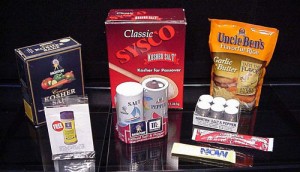The Importance of Food Packaging and Printing Beyond Just a Wrapper
In today's fast-paced world, food packaging and printing play a significant role in not only preserving the quality and safety of food products but also influencing consumer choices and enhancing brand identity. As the food industry continues to evolve, understanding the multifaceted benefits of effective packaging and printing techniques has become increasingly vital.
Preservation and Safety
One of the primary functions of food packaging is to preserve the freshness and safety of food items. Innovative materials and designs have been developed to ensure that food remains uncontaminated and retains its nutritional value. For instance, vacuum-sealed packaging and modified atmosphere packaging (MAP) help extend the shelf life of perishable goods by slowing down spoilage and preventing microbial growth. These methods are particularly crucial for products like meat, dairy, and fresh produce, where quality can deteriorate rapidly.
Moreover, packaging serves as a barrier against external factors such as moisture, air, and light, which can negatively impact food quality. By employing effective packaging solutions, manufacturers can minimize food waste and deliver products that are safe for consumption.
Consumer Appeal and Brand Identity
In today's competitive market, the visual appeal of food packaging cannot be understated. Eye-catching designs, vibrant colors, and unique shapes attract consumers and make a product stand out on crowded supermarket shelves. Food packaging acts as a silent salesman, conveying important information and creating an emotional connection with the buyer. Brands that invest in high-quality printing techniques can effectively communicate their values, whether it be organic sourcing, sustainability, or gourmet quality.
The role of printing technology in food packaging extends beyond aesthetics. High-definition printing allows for detailed graphics and typography, making it easier to showcase product features, ingredients, and nutritional information. With the rise of health-conscious consumers, clear labeling has become paramount. Regulations require transparency about what goes into food products, and effective printing ensures that consumers have access to this crucial information without confusion.
food packaging and printing

Eco-Friendly Solutions
As concerns about environmental issues continue to grow, food packaging and printing companies are increasingly turning their attention to sustainable materials and practices. Biodegradable and recyclable packaging options are gaining popularity, as consumers are becoming more conscious of their ecological footprint. Brands that prioritize sustainability in their packaging not only resonate with eco-friendly consumers but also contribute to broader environmental conservation efforts.
Innovative printing technologies, such as water-based inks and soy-based inks, are being utilized to reduce the environmental impact of packaging. These inks are less harmful to the environment compared to traditional petroleum-based inks and allow for the production of vibrant, high-quality prints that appeal to consumers.
The Future of Food Packaging and Printing
The future of food packaging and printing is intertwined with technological advancements and changing consumer preferences. The rise of smart packaging, for instance, integrates technology such as QR codes and NFC tags that provide consumers with detailed information about product origins and freshness. This level of engagement transforms how consumers interact with brands, creating a more informed and connected shopping experience.
Additionally, personalization is becoming a significant trend. Customizable packaging allows consumers to feel a deeper connection to a product, and companies are leveraging data analytics to tailor their packaging designs according to specific consumer demographics.
Conclusion
Food packaging and printing are no longer just about enclosing and labeling products; they have become essential components of the food industry. From ensuring safety and freshness to enhancing brand identity and embracing sustainability, the impacts of packaging and printing are far-reaching. As technology continues to advance, so too will the possibilities for creating innovative packaging solutions that meet the evolving demands of consumers while maintaining a strong commitment to environmental stewardship. Ultimately, effective food packaging and printing will continue to shape consumer experiences and influence purchasing decisions in meaningful ways.



